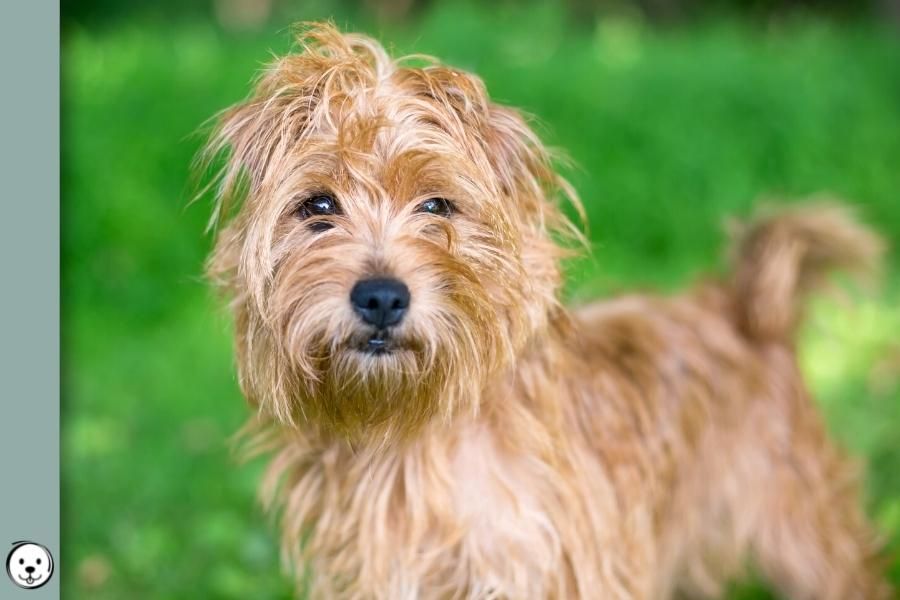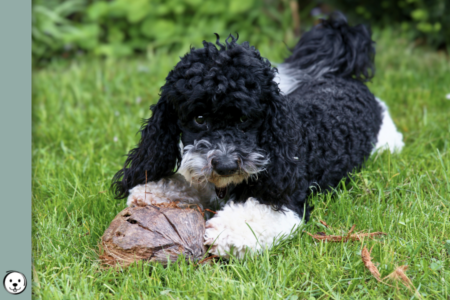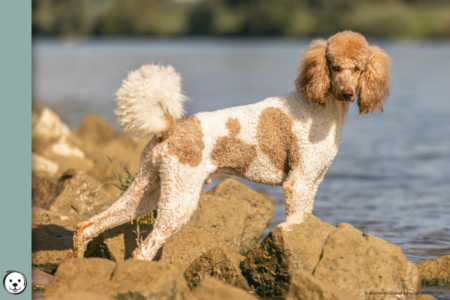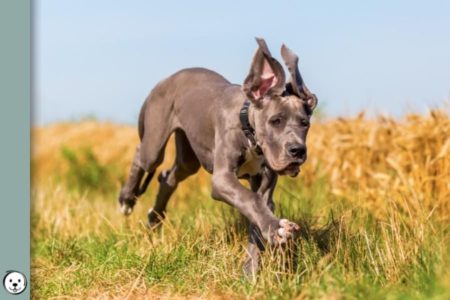A bearded or wirehaired coat type is a hair-growth pattern that is caused by a mutation in the RSPO2 gene. This causes furnishings including a mustache and eyebrows as well as a wiry coat texture in some dogs.
What are furnishings?
A dog with furnishings has a hair growth pattern with longer facial hair and a thick and even coat covering the whole body compared to a non-furnished dog.
A mustache and hairy eyebrows are characteristic traits of all bearded dog breeds and most of their mixes.

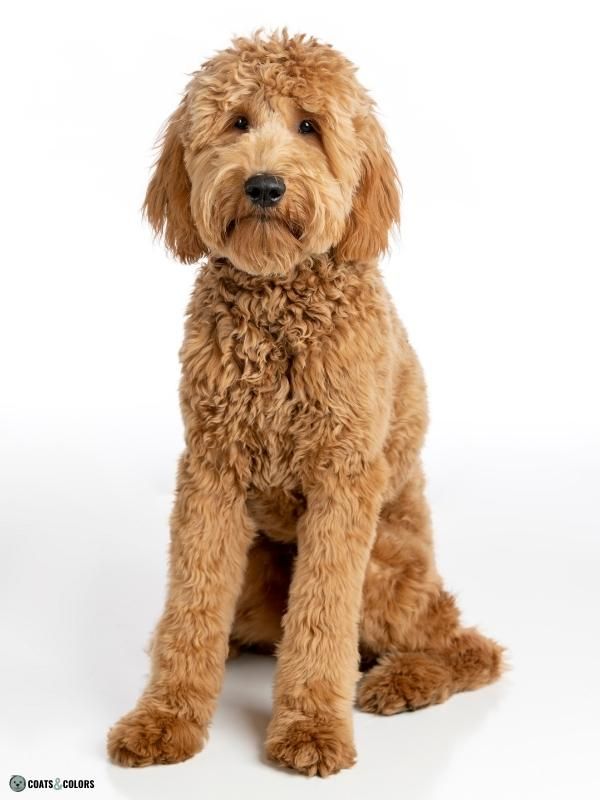
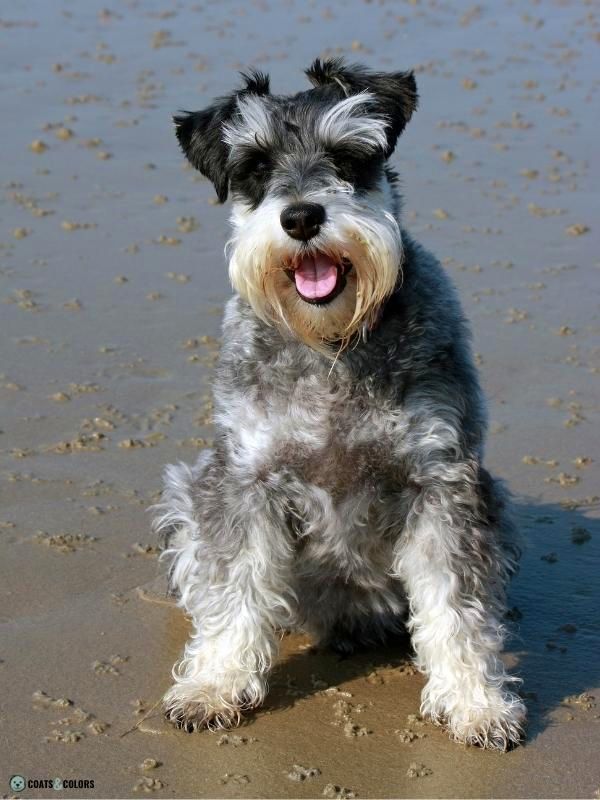
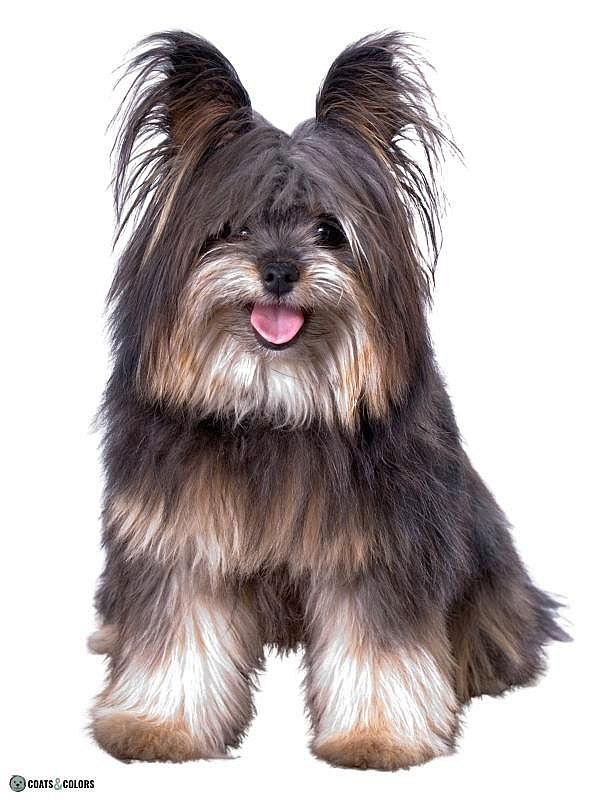
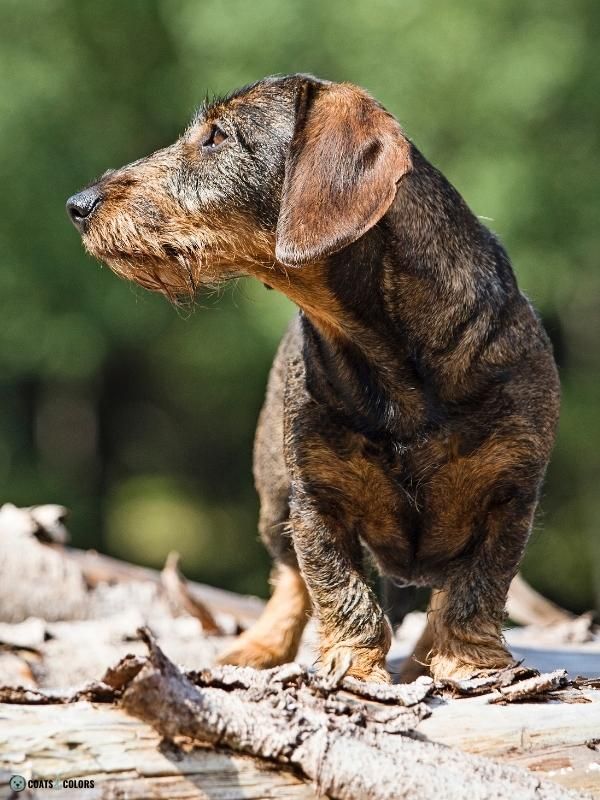
If furnishings are considered the “proper coat” in a dog breed (e.g. Labradoodle, Goldendoodle, Portuguese Water Dog) a non-furnished growth phenotype is called an “improper coat“[2].
The expression of furnishings varies from barely noticeable to very long and bushy beards and facial hair. And other traits like coat length or curly coat can alter the actual phenotypes in dogs with furnishings.
The Wh-Locus
The RSPO2 gene (R-spondin-2) on dog chromosome 13 is sometimes referred to as the Wirehair-Locus (Wh-Locus) or Furnishing-Locus (F-Locus).
RSPO2 is part of a signaling pathway that is needed to properly establish hair follicles. The mutant alleles responsible for furnishings seem to increase the production of RSPO2 in the skin of the muzzle. But furnishings also can add longer hair on the rest of the body[1].
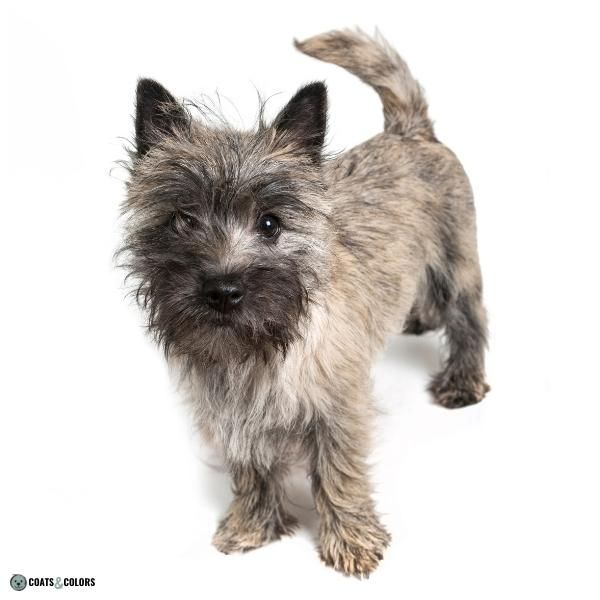
Improper coat (IC) represents the wild-type allele and gives a phenotype without facial hair. Breeders of bearded dogs sometimes call the RSPO2 gene the IC-Locus.
Furnishings are an autosomal dominant trait and dogs normally need only one copy to express a bearded phenotype. There are two known variants that either cause full furnishings (F1) or weak furnishings (F2 or Fw).
A non-bearded dog has two recessive variants (IC/IC) for a non-furnished phenotype known as an improper coat in some breeds.
For some unknown reason, some non-furnished dogs sometimes test as furnished. This regularly happens in some breeds like Rottweiler or Tibetan Spaniel.
And there might be modifier genes that influence the amount and placement of furnishings.
In some breeds like Rottweiler, Chart Polski, Saluki, Tibetan Spaniel furnished puppies are sometimes born out of non-bearded parents. This shouldn’t be possible since furnishings are a dominant trait that should create a bearded phenotype even in heterozygous dogs (F/IC).
But these dog breeds somehow have some non-expressing bearded dogs.
Maybe they have a recessive variant that only affects homozygous dogs? Or somethings suppresses the furnishings from expressing? Or these breeds might simply have a very weak version of dominant furnishings where one copy of furnishings (F?/IC) just doesn’t alter the phenotype enough to exclude affected dogs from breeding.
Either way, there seems to be more to furnishings than we currently understand.
Furnishings Calculator
Dogs with any degree of furnishings can have non-bearded offspring (IC/IC) if they carry a wild-type variant at the Wh-Locus (F1/IC or F2/IC) and are bred to another carrier.
And dogs with full furnishings can have puppies with a reduced beard growth (F2/F2) if both parents carry weak furnishings (F1/F2).
This simple tool can help you predict the outcome of different combinations of furnished and non-furnished dogs:
Furnished Coat Types
So, furnishings add a beard and bushy eyebrows to a dog’s face. They also tend to cause hairs to grow a little longer than in un-furnished dogs.

There are all kinds of variations of how a furnished dog will look, some have bushier or coarser hair than others. And not all of these differences can be explained yet.
But the overall bhe biggest influence on the coat type and texture in furnished dog breeds is caused by hair length and curls.
Improper Coat
Dogs with a wild-type coat will have short hair on their head, their face and their lower legs.
This is the normal “proper” phenotype of all non-bearded dog breeds. But in breeds where facial furnishings are the standard, a growth pattern without furnishings is called “improper”.
Since furnishings are caused by a dominant mutant allele (F1/- or F2/-) the recessive wild-type variant (IC) can be carried and stay hidden for many generations (F1/IC or F2/IC). So even if the IC allele occurs at a very low frequency this can happen in almost any bearded dog breed.
Many doodle breeders in particular use genetic testing to avoid breeding puppies with an improper coat.
That’s because the wild-type IC variant is the standard allele in Retrievers, Australian Shepherds, Bernese Mountain Dogs, spaniels or Golden Retrievers. So IC occurs at a high frequency in newer lines of Labradoodles, Goldendoodles, Aussiedoodles, Bernedoodles, Cockapoos etc.
Weak Furnishings
The second allele found in the RSPO2 gene (F2) gives a phenotype described as weak funsihings. What this means is a lesser form of furnishings that gives a more sparse and minimalistic beard growth.
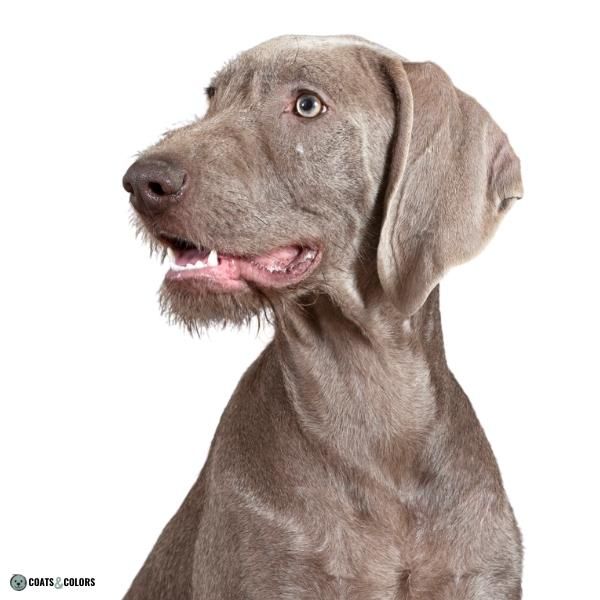
In comparison to fully finished dogs (F1) the weaker version of funsihings often is not even visible in puppies and will only comes in with the adult coat.
Weak furnishings (F2) are recessive to the common furnishing allele (F1). But dogs with normal beard growth can produce puppies with weak furnishings if they carry this trait (F1/F2).
Wirehaired dogs
Shorthaired dogs with furnishings produce a wiry coat with longer leg hair, coarse body hair and some beard and bushy eyebrows. The hairs along the dorsal line are sometimes slightly longer and coarser than on the rest of the body. The wiry texture is caused by thick and bent guard hairs that stick out away from the body.
Hair length in shorthaired dogs varies from really, really short up to plushy double coats with moderate length.
Combined with furnishings the variation in coat length can cause different expressions of wirehaired coats from very tight-fitting wiry jackets up to more shaggy looks like in Schnauzer breeds
| Long | Curly | Wire |
| ✗ | ✗ | ✓ |
This is the common coat growth pattern of many terrier breeds like the Scottish Terrier or Border Terrier.
Other dog breeds with a wiry coat are some pointing dogs like the Hungarian Wirehaired Pointer or the Wirehaired Pointing Griffon or Wirehaired Dachshunds.
Some breeds come in varieties with or without furnishings, e.g. Dachshund or German Hunting Terrier. Other breeds were fully separated based on the presence of furnishings, e.g. Vizsla and Wirehaired Vizsla.
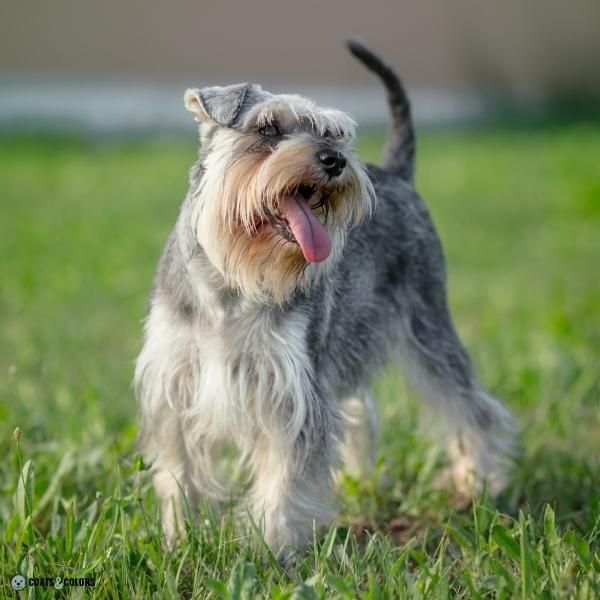

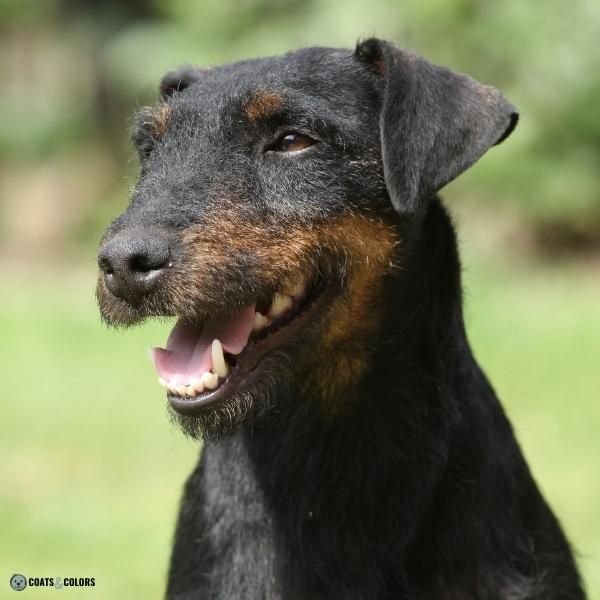

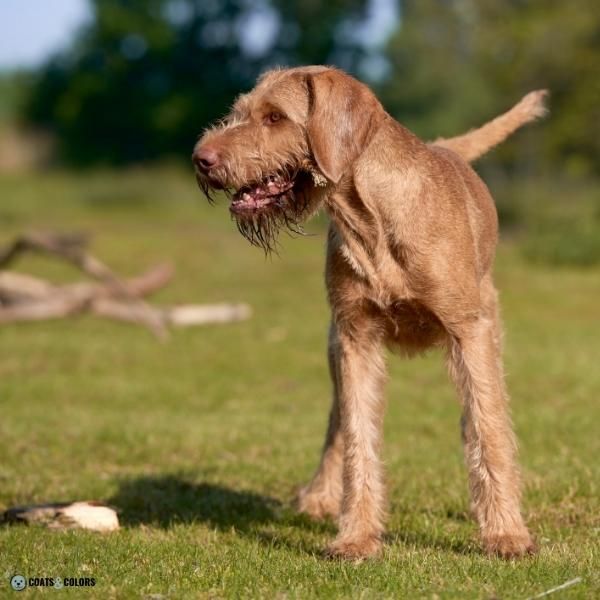
Dogs with a wirehaired coat texture often don’t shed like normal dogs.
As they go through the hair cycle but the hairs become thicker as they grow. During coat blow season the old hairs tend to get caught under the thick and wiry guard hairs on their back. So it’s normal for most of the affected breeds that some hand-stripping is part of the normal coat care routine.
Curly wirehaired dogs
Shorthaired dogs normally can’t produce any real curls because their hairs are too short to twist. But furnishings add just enough length that these dogs can produce a wiry and curly coat.
| Long | Curly | Wire |
| ✗ | ✓ | ✓ |
Some examples that commonly sport this phenoytpe are Airedale Terrier, Wire-haired Fox Terrier, Lakeland Terrier or Welsh Terrier.

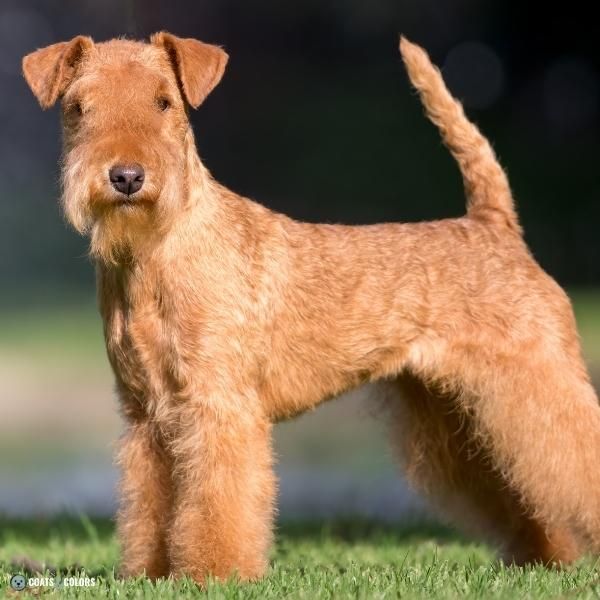
There aren’t too many wirehaired dog breeds with curly coat and most of them are related. These dogs also need to be hand-stripped to remove dead hair locked under the wiry top coat.
Long shaggy coats
In longhaired dogs with straight hair and furnishings, the effects of both traits seem to add up. These dogs produce an especially long and shaggy coat with plenty of leg hair as well as a long beard and eyebrows.
| Long | Curly | Wire |
| ✓ | ✗ | ✓ |
There are many well-known dog breeds with this kind of growth pattern.


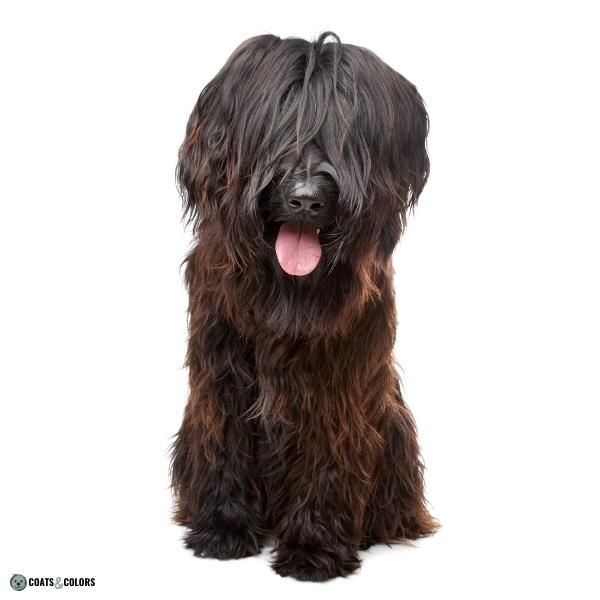
Think of herding dogs like Briard, Bearded Collie, Nederlandse Schapendoes, Polish Lowland Sheepdog or Old English Sheepdog.
And then there are also many smaller companion dogs with super long coats like Tibetan Terrier, Shih Tzu, Lhasa Apso, Yorkshire Terrier and bichons like Havanese, Maltese or Coton de Tuléar.
Curly longhaired dogs
If furnishings are combined with long hair and curls they give the ever-growing curly coat found in many popular companion dogs and water dog breeds.
| Long | Curly | Wire |
| ✓ | ✓ | ✓ |
Of course, dogs with a very long coat can also express curly or wavy hair.
This can be observed in many doodles and every Poodle (where the beard is often shaved off). Other longhaired, curly and bearded breeds are Bichon Frisé, Barbet, Spanish Water Dog or Lagotto Romagnolo.
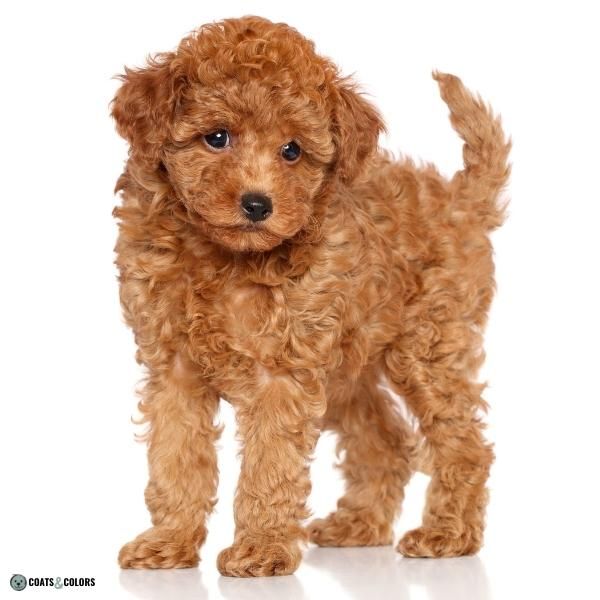
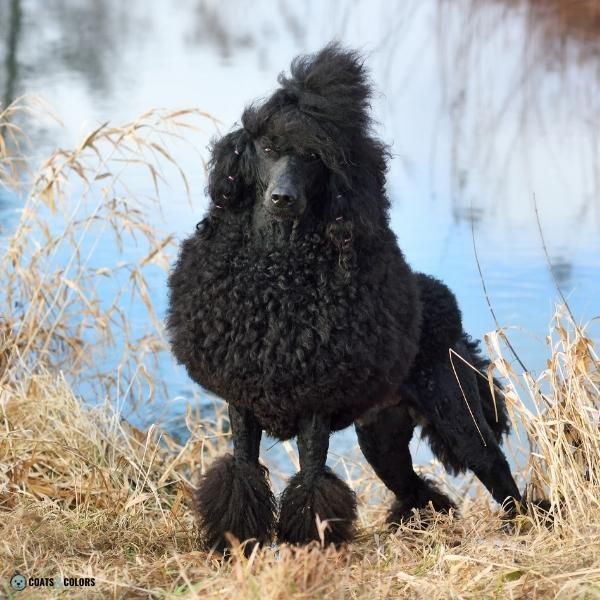
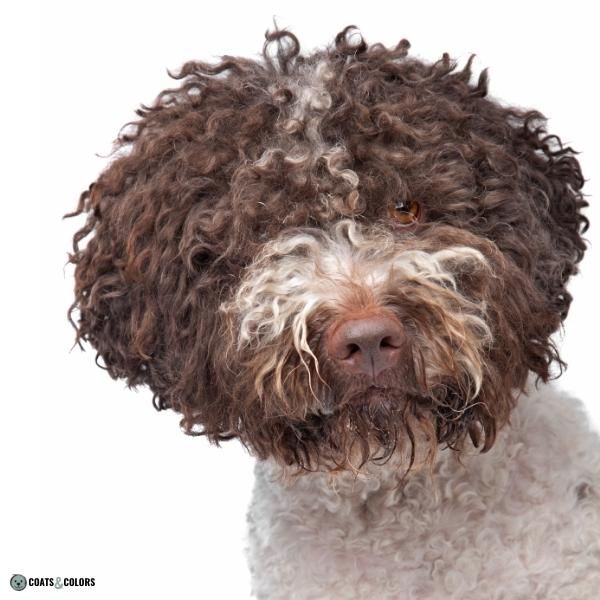
Dog Breeds with Furnishings
Furnishings are characteristic for very many different dog breeds and the majority of terrier breeds. Here are some examples:
- Affenpinscher
- Airedale Terrier
- Australian Terrier
- Bearded Collie
- Bichon Frisé
- Black Russian Terrier
- Border Terrier
- Bouvier Des Flandres
- Briard
- Brussels Griffon
- Cairn Terrier
- Chinese Crested
- Dachshund
- Dandie Dinmont Terrier
- Deerhound
- German Wirehaired Pointer
- Glen of Imaal Terrier
- Grand Basset Griffon Vendéen
- Havanese
- Irish Terrier
- Irish Wolfhound
- Jack Russell Terrier
- Kerry Blue Terrier
- Lakeland Terrier
- Lhasa Apso
- Maltese
- Norfolk Terrier
- Norwich Terrier
- Old English Sheepdog
- Parson Russell Terrier
- Petit Basset Griffon Vendéen
- Poodle
- Portuguese Water Dog
- Schnauzer
- Shih Tzu
- Skye Terrier
- Soft Coated Wheaten Terrier
- Spinone Italiano
- Welsh Terrier
- West Highland White Terrier
- WirehairedFox Terrier
- Wirehaired Pointing Griffon
- Yorkshire Terrier
Learn More
Links
[1] Cadieu et. al.. Coat variation in the domestic dog is governed by variants in three genes. Science 326:150-3, 2009. Pubmed reference: 19713490. https://doi.org/10.1126/science.1177808
[2] Heidi G. Parker, Kevin Chase, Edouard Cadieu, Karl Gordon Lark, Elaine A. Ostrander. An Insertion in the RSPO2 Gene Correlates with Improper Coat in the Portuguese Water Dog. Journal of Heredity, Volume 101, Issue 5, September-October 2010, Pages 612–617. https://doi.org/10.1093/jhered/esq068
[3] Online Mendelian Inheritance in Animals (OMIA). Sydney School of Veterinary Science, University of Sydney. OMIA 001531-9615 (05/2013): Furnishings (moustache and eyebrows) in Canis lupus familiaris. https://omia.org/OMIA001531/9615/

Hi! I’m Steffi. I am a biologist and a big time dog nerd. You are curious about coat color genetics? You’ve come to the right place! Read more.

